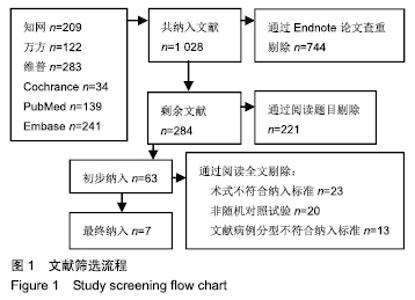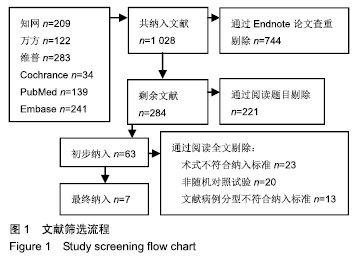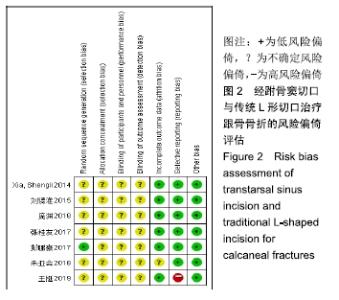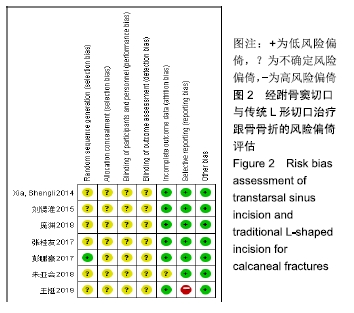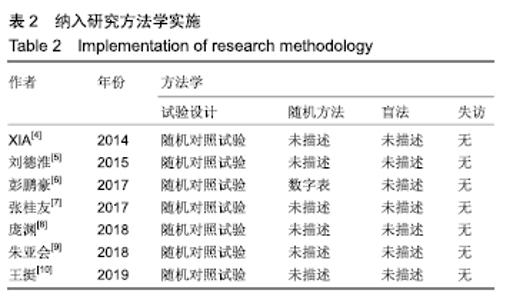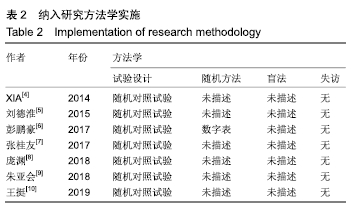[1] 陈华,李宇卫,姜宏,等.经皮撬拨配合有限切开植骨内固定治疗跟骨骨折疗效分析[J]. 中国骨伤, 2017, 30(12):1084-1090.
[2] KLINE AJ, ANDERSON RB, DAVIS WH, et al. Minimally invasive technique versus an extensile lateral approach for intra-articular calcaneal fractures. Foot Ankle Int. 2013;34(6):773-780.
[3] SCHEPERS T, BACKES M, DINGEMANS SA, et al. Similar anatomical reduction and lower complication rates with the sinus tarsi approach compared to the extended lateral approach in displaced intra-articular calcaneal fractures. J Orthop Trauma. 2017.
[4] XIA S, LU Y, WANG H, et al. Open reduction and internal fixation with conventional plate via L-shaped lateral approach versus internal fixation with percutaneous plate via a sinus tarsi approach for calcaneal fractures – A randomized controlled trial. Int J Surg. 2014; 12(5):475-480.
[5] 刘德淮,黄晖,庄小强,等.两种不同方法治疗Sanders Ⅱ、Ⅲ型跟骨关节内骨折的疗效对比[J].中国矫形外科杂志,2015,23(6):496-501.
[6] 彭鹏豪,乔荣勤,刘铭柏,等.跗骨窦小切口与外侧L型切口治疗跟骨骨折的对照研究[J].中国中医骨伤科杂志,2017,25(6):14-18.
[7] 张桂友,杨戈,聂建雄,等.两种手术方式治疗跟骨骨折的临床效果比较[J]. 中国医学导报,2017,14(6):108-111.
[8] 庞渊,张庆,赵光宇,等.经跗骨窦入路复位钢板内固定治疗跟骨骨折疗效观察[J]. 新疆医科大学学报,2018,41(6):702-710.
[9] 朱亚会,付炳金, 晓东,等.经跗骨窦切口与传统“L”形入路治疗SandersⅡ ~ Ⅲ型跟骨骨折的疗效对比[J]. 中国伤残医学, 2018,26(8): 4-6.
[10] 王挺.经跗骨窦入路微创治疗跟骨骨折的效果观察[J].微创医学,2019, 14(1): 28-30.
[11] ZWIPP H, RAMMELT S, BARTHEL S. Calcaneal fractures--the most frequent tarsal fractures. Ther Umsch. 2004;61(7): 435-450.
[12] WEI N, YUWEN P, LIU W, et al. Operative versus nonoperative treatment of displaced intra-articular calcaneal fractures: A meta-analysis of current evidence base. Medicine (Baltimore). 2017;96(49): e9027.
[13] HOLM JL, LAXSON SE, SCHUBERTH JM. Primary subtalar joint arthrodesis for comminuted fractures of the calcaneus. J Foot Ankle Surg. 2015; 54(1): 61-65.
[14] SANDERS R. Intra-articular fractures of the calcaneus: present state of the art. J Orthop Trauma. 1992; 6(2): 252-265.
[15] CLARE MP, CRAWFORD WS. Managing complications of calcaneus fractures. Foot Ankle Clin. 2017;22(1): 105-116.
[16] EBRAHEIM NA, ELGAFY H, SABRY FF, et al. Sinus tarsi approach with trans-articular fixation for displaced intra-articular fractures of the calcaneus. Foot Ankle Int. 2000;21(2):105-113.
[17] LI LH, GUO YZ, WANG H, et al. Less wound complications of a sinus tarsi approach compared to an extended lateral approach for the treatment of displaced intraarticular calcaneal fracture. Medicine. 2016; 95(36): 1-7.
[18] MENG Q, WANG Q, WU X, et al. Clinical application of the sinus tarsi approach in the treatment of intra-articular calcaneal fracture. Medicine (Baltimore). 2018;97(13): e0175.
[19] KIR MC, AYANOGLU S, CABUK H, et al. Mini-plate fixation via sinus tarsi approach is superior to cannulated screw in intra-articular calcaneal fractures: A prospective randomized study. J Orthop Surg (Hong Kong). 2018; 26(3): 1-7.
[20] RACHAKONDA KR, NUGUR A, SHEKAR NA, et al. Minimally invasive fixation for displaced intra-articular fractures of calcaneum: a short-term prospective study on functional and radiological outcome. Musculoskelet Surg. 2019;103(2):181-189.
[21] JANSEN SCP, BRANSEN J, VAN MONTFORT G, et al. Should the extended lateral approach remain part of standard treatment in displaced intra-articular calcaneal fractures? J Foot Ankle Surg. 2018; 57(6): 1120-1124.
[22] LEE D, YOO JH, SON DW, et al. Is the Bohler angle reliable for operative reduction of calcaneus fracture? J Orthop Sci. 2019;24(3): 521-525.
|


